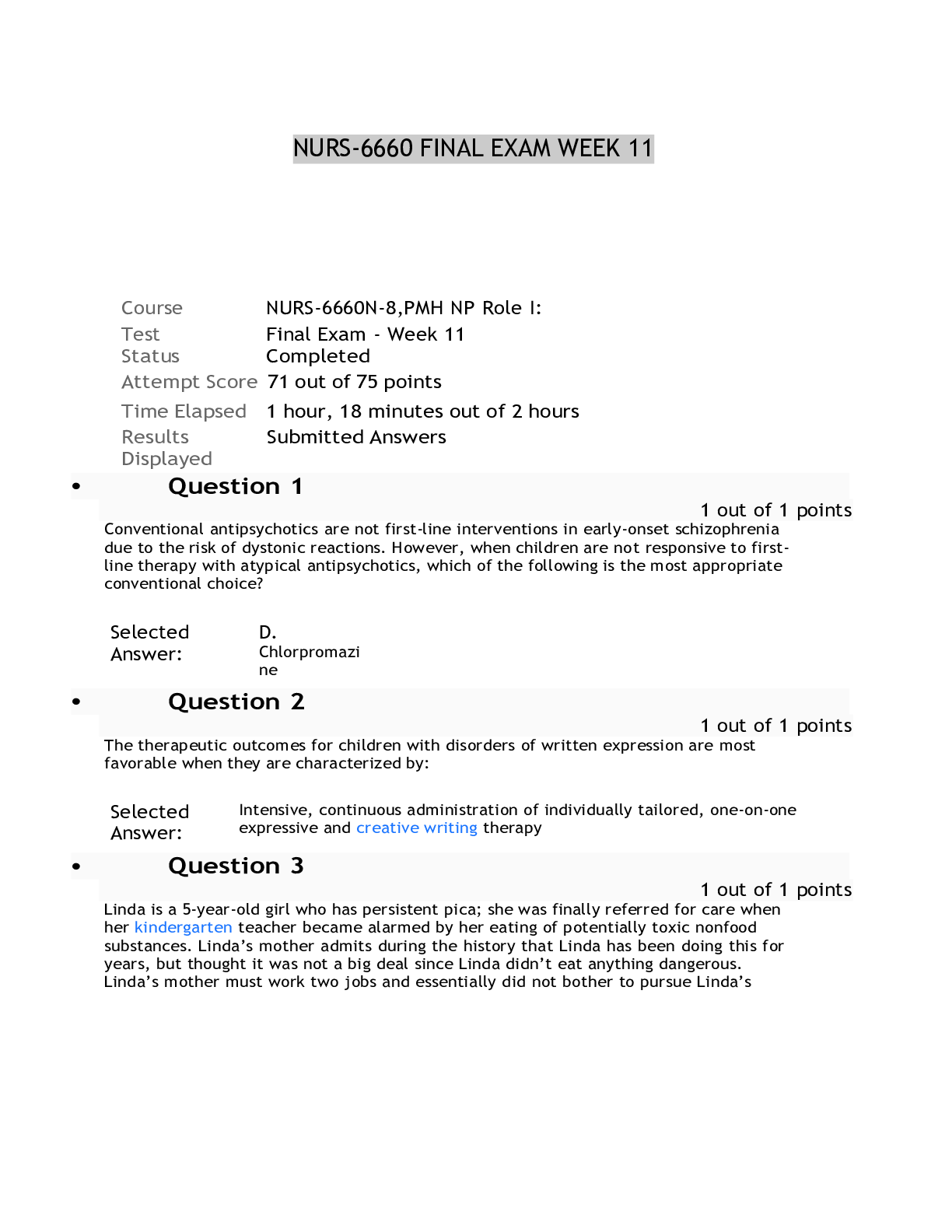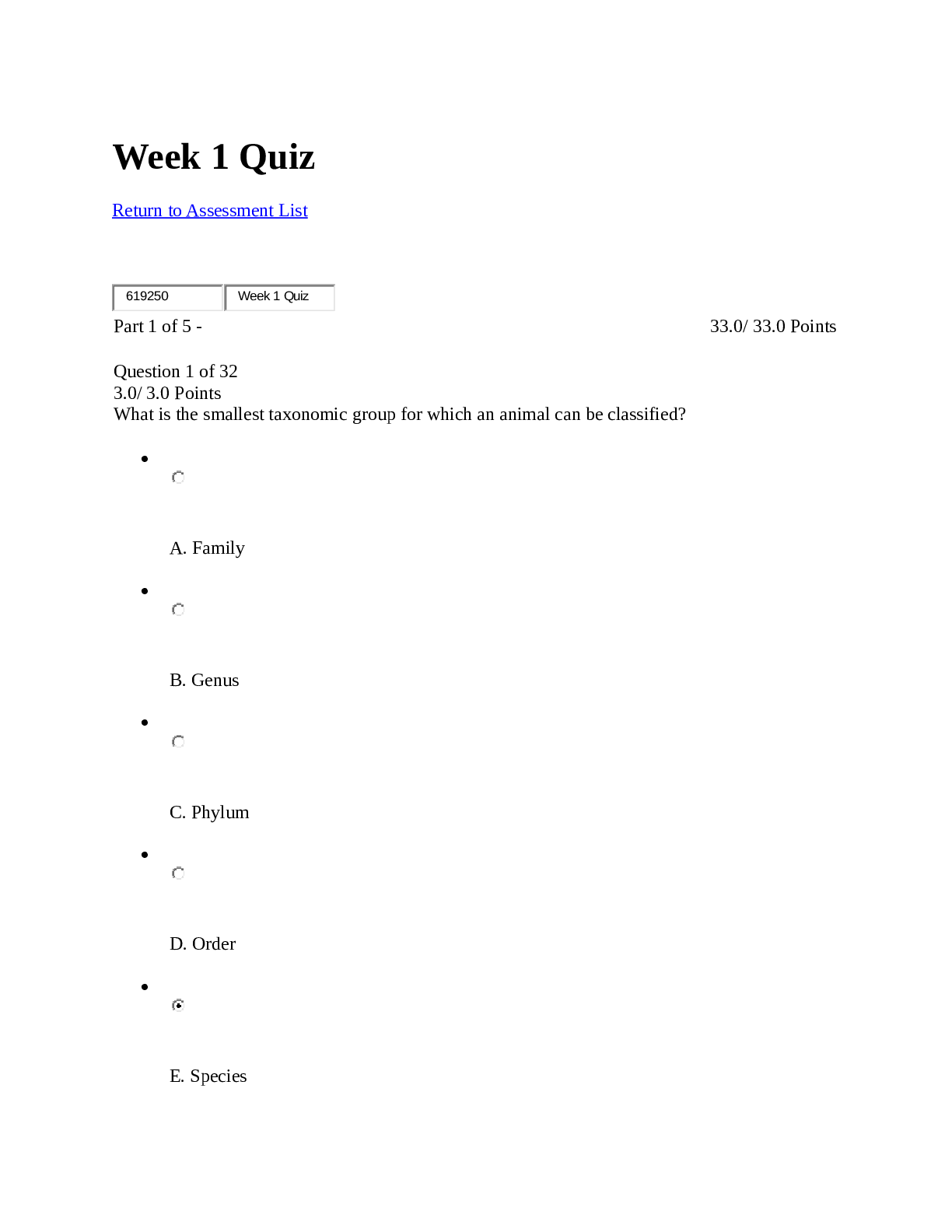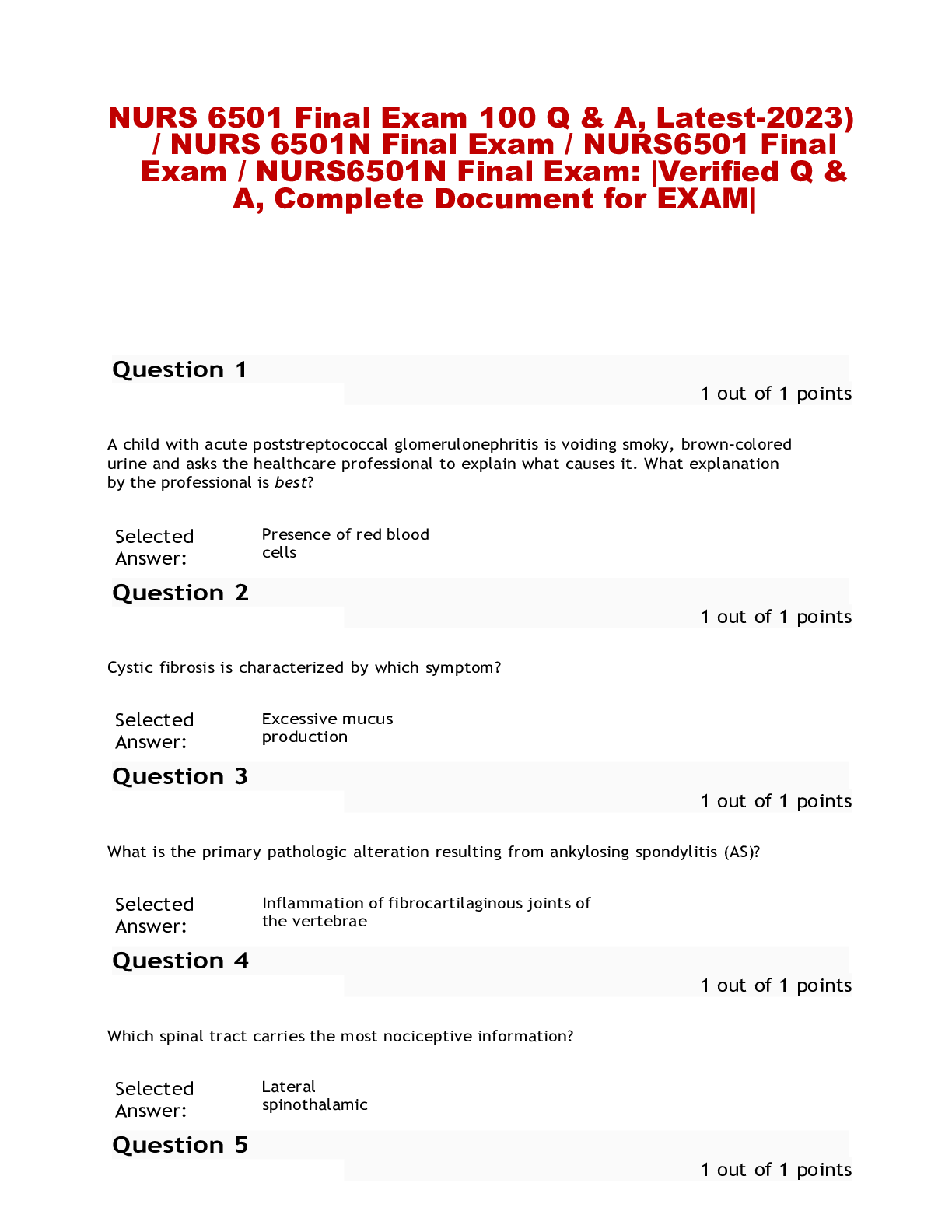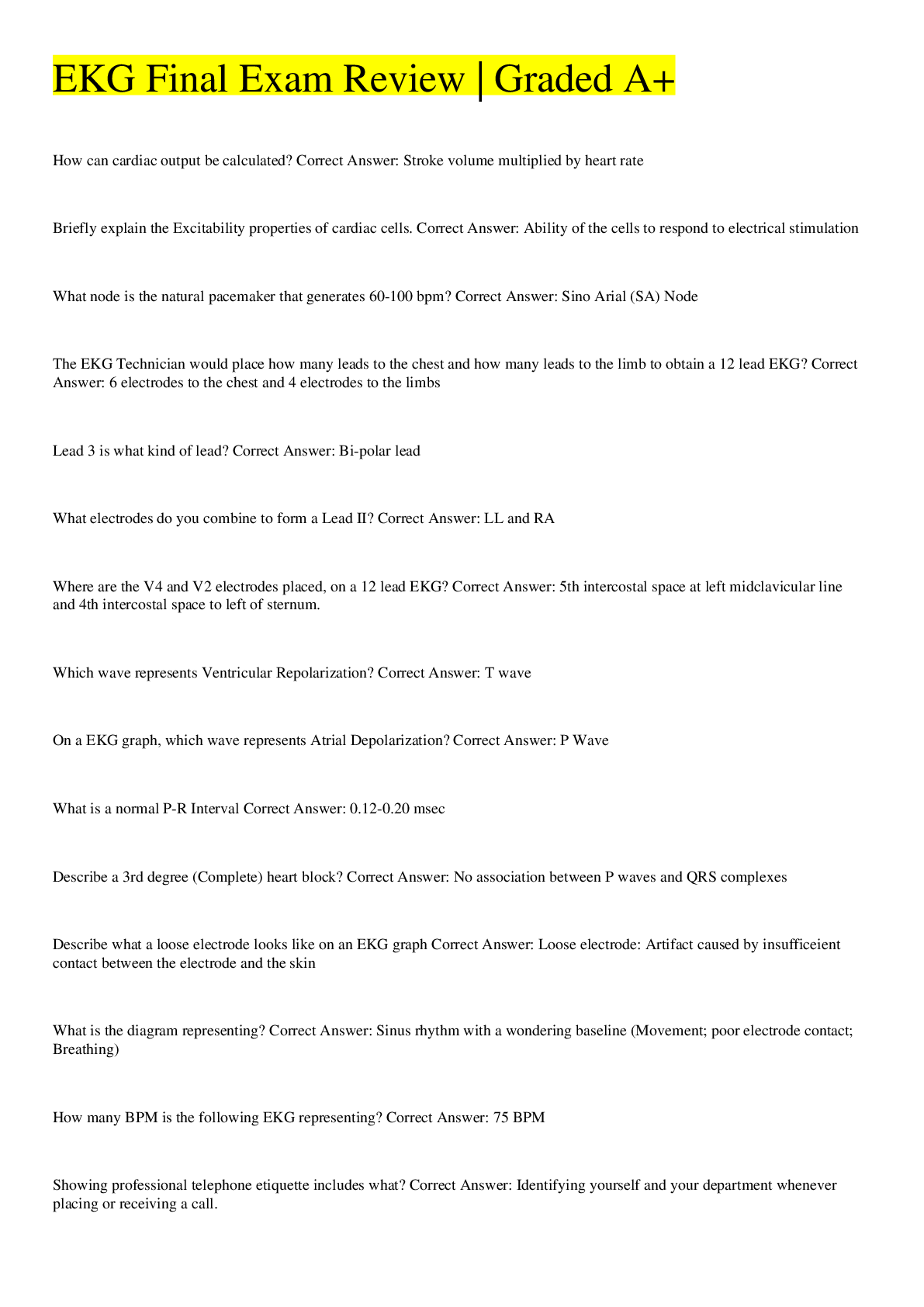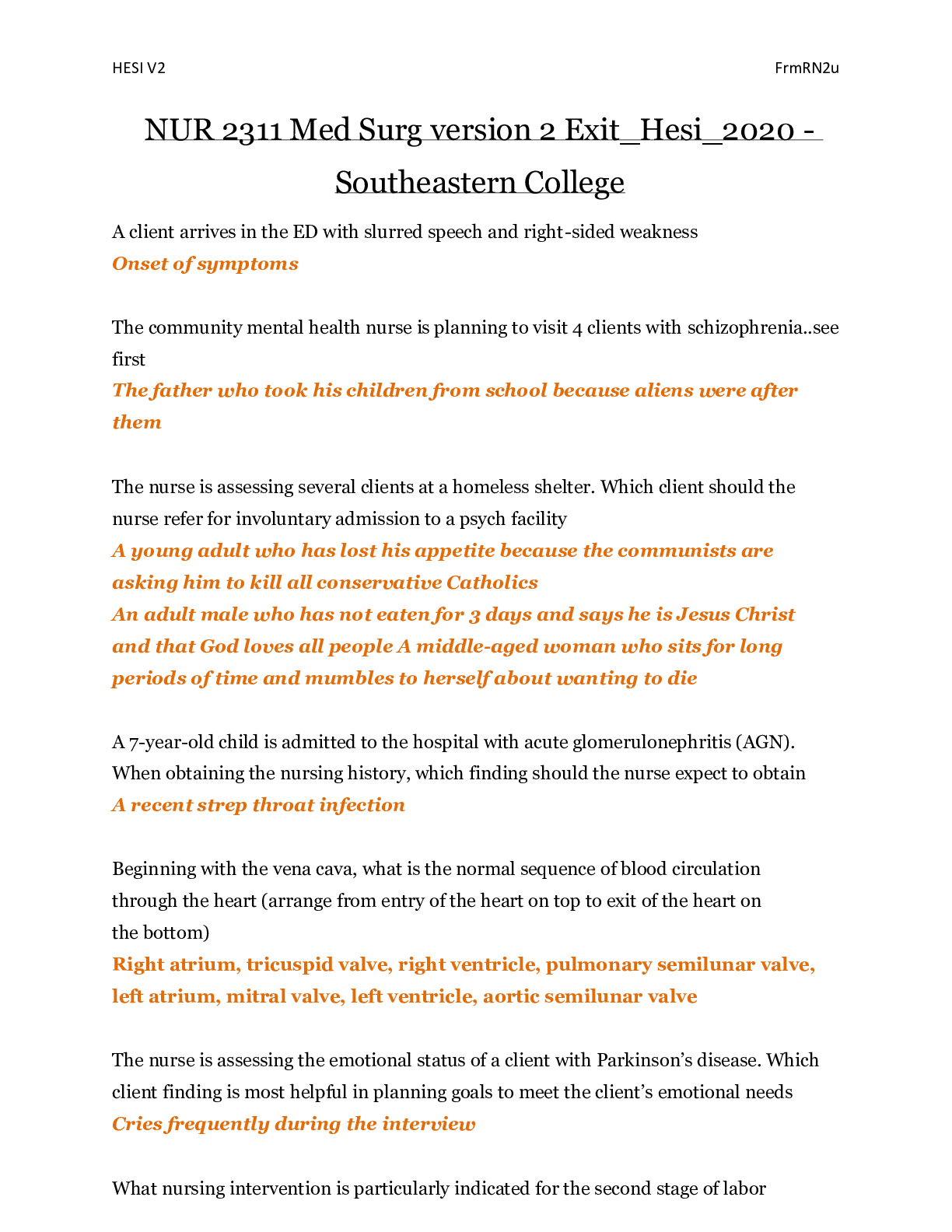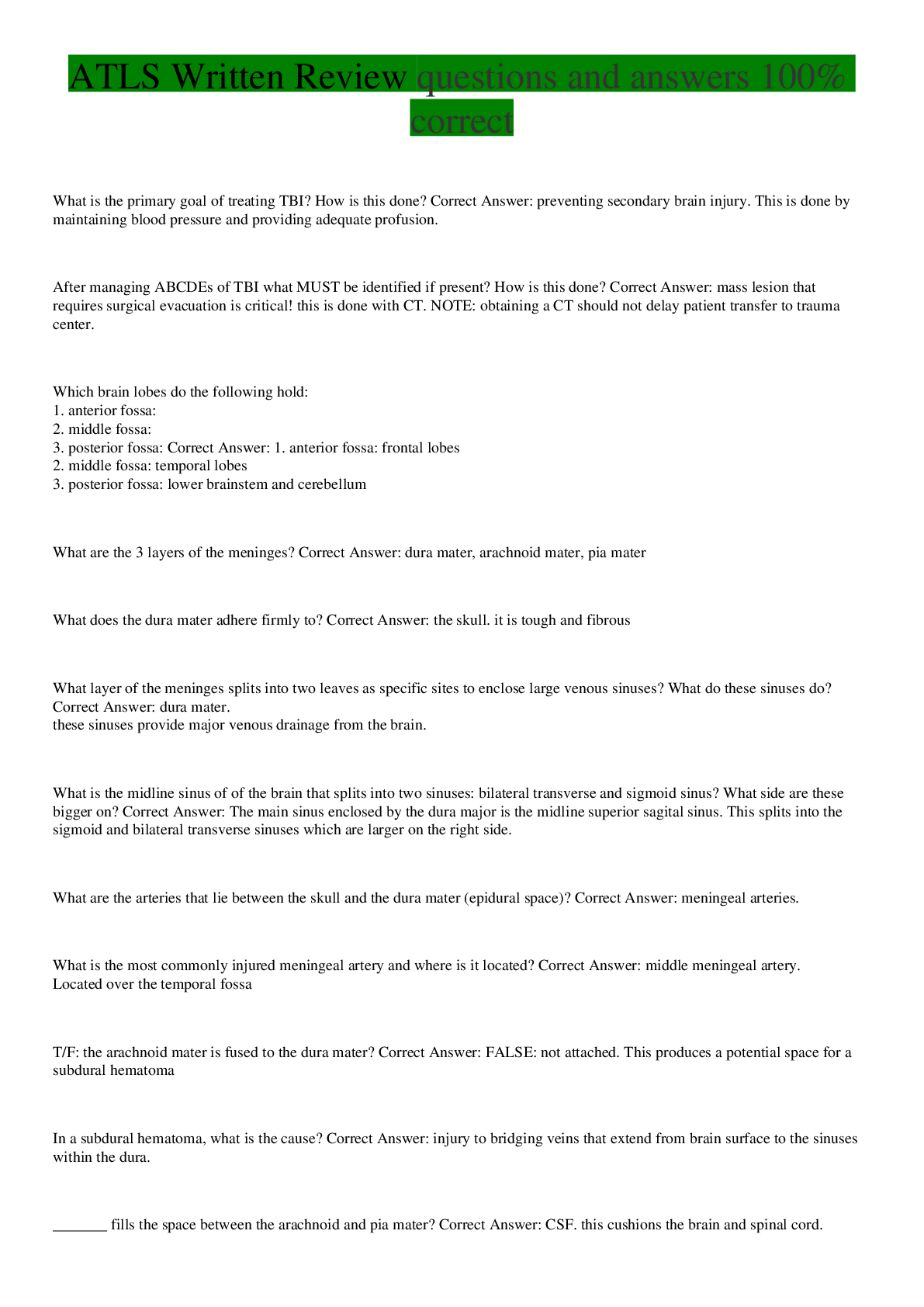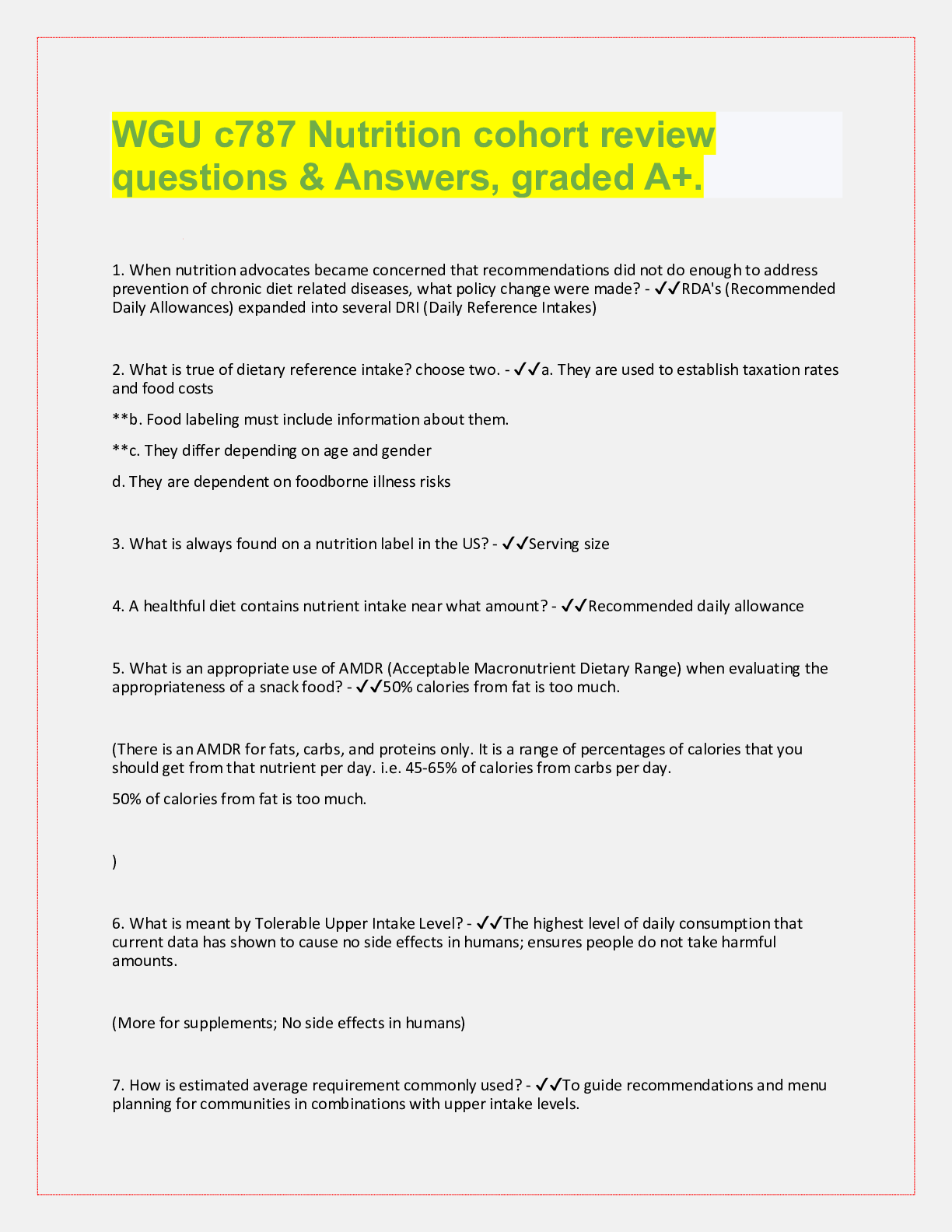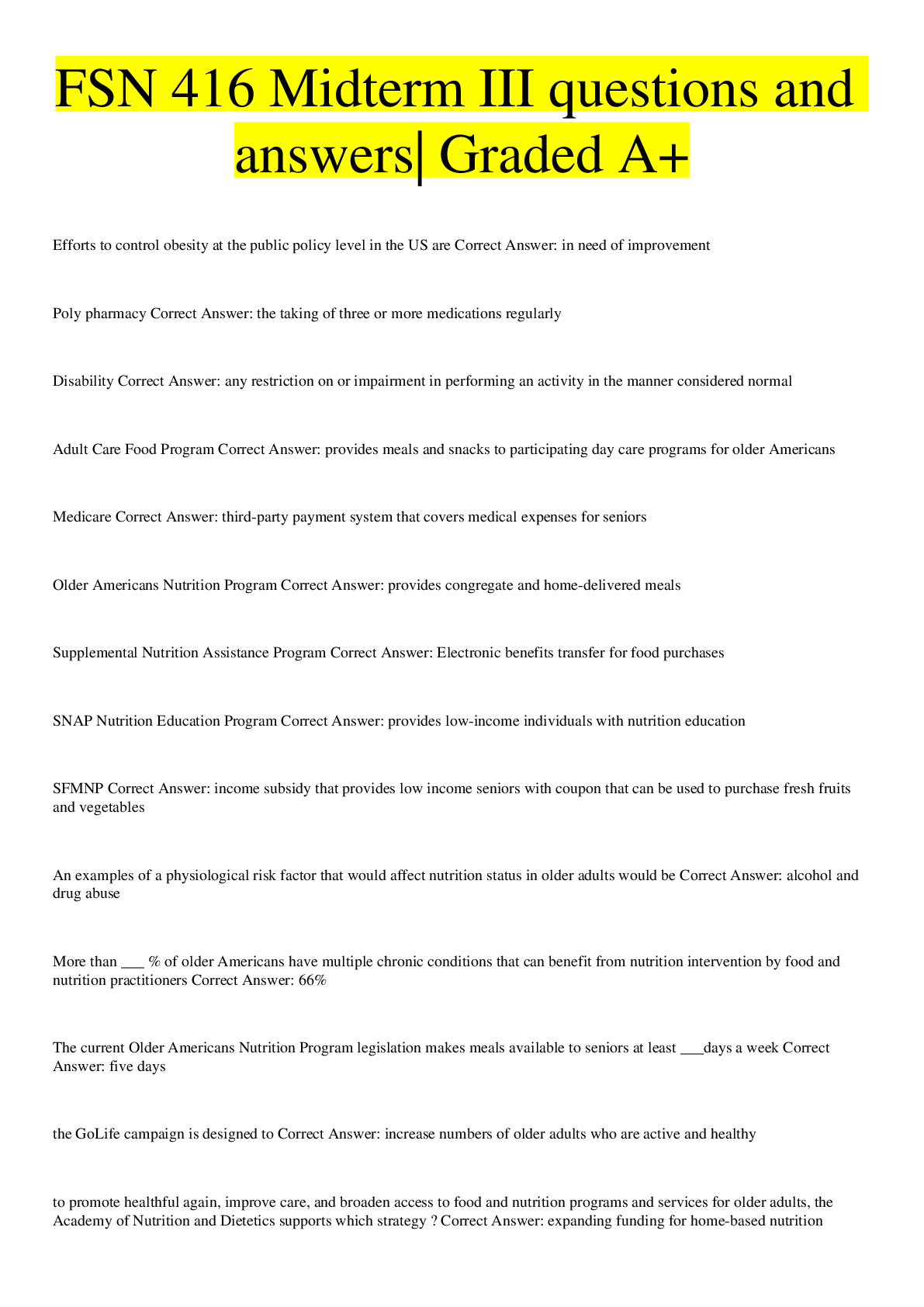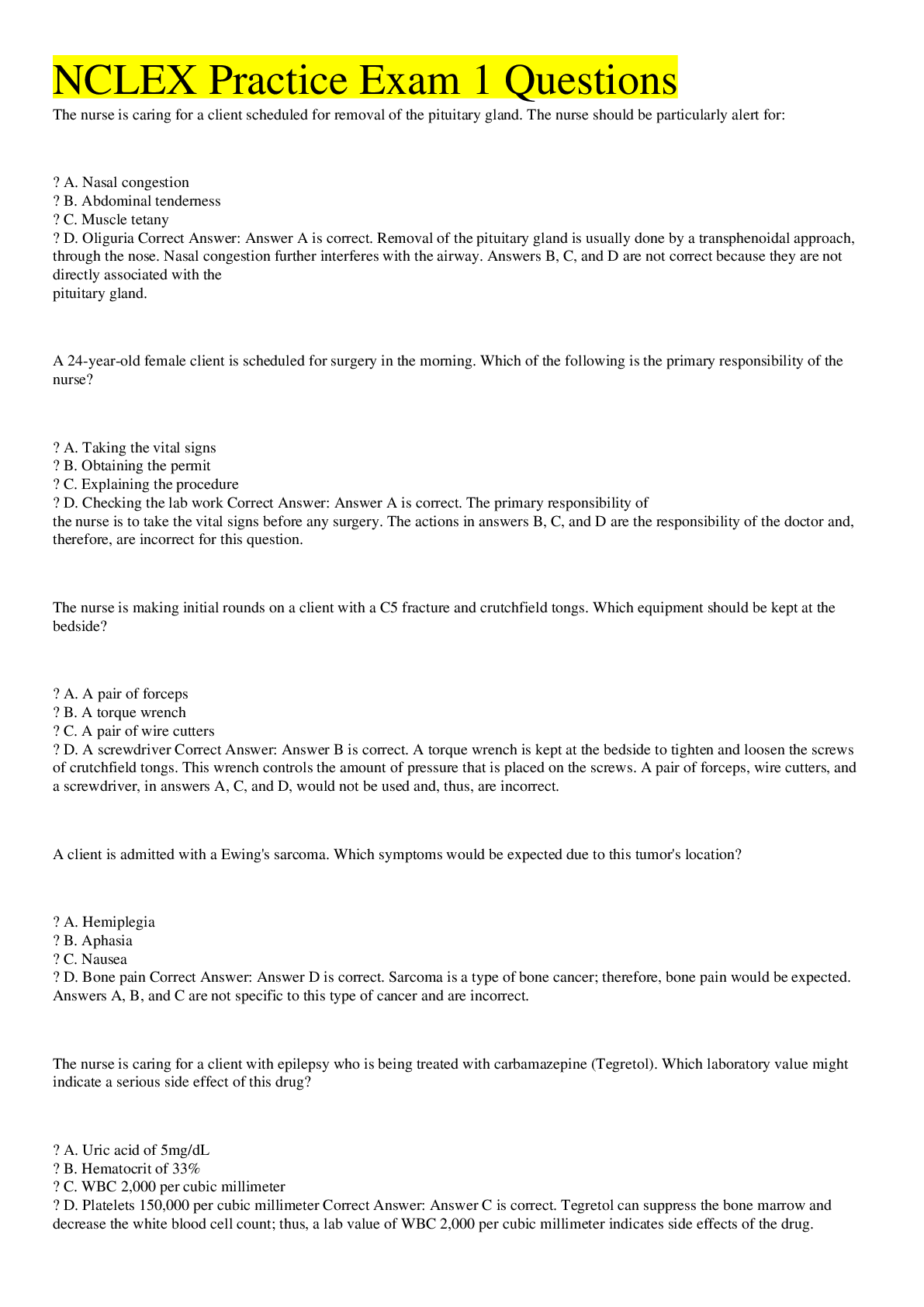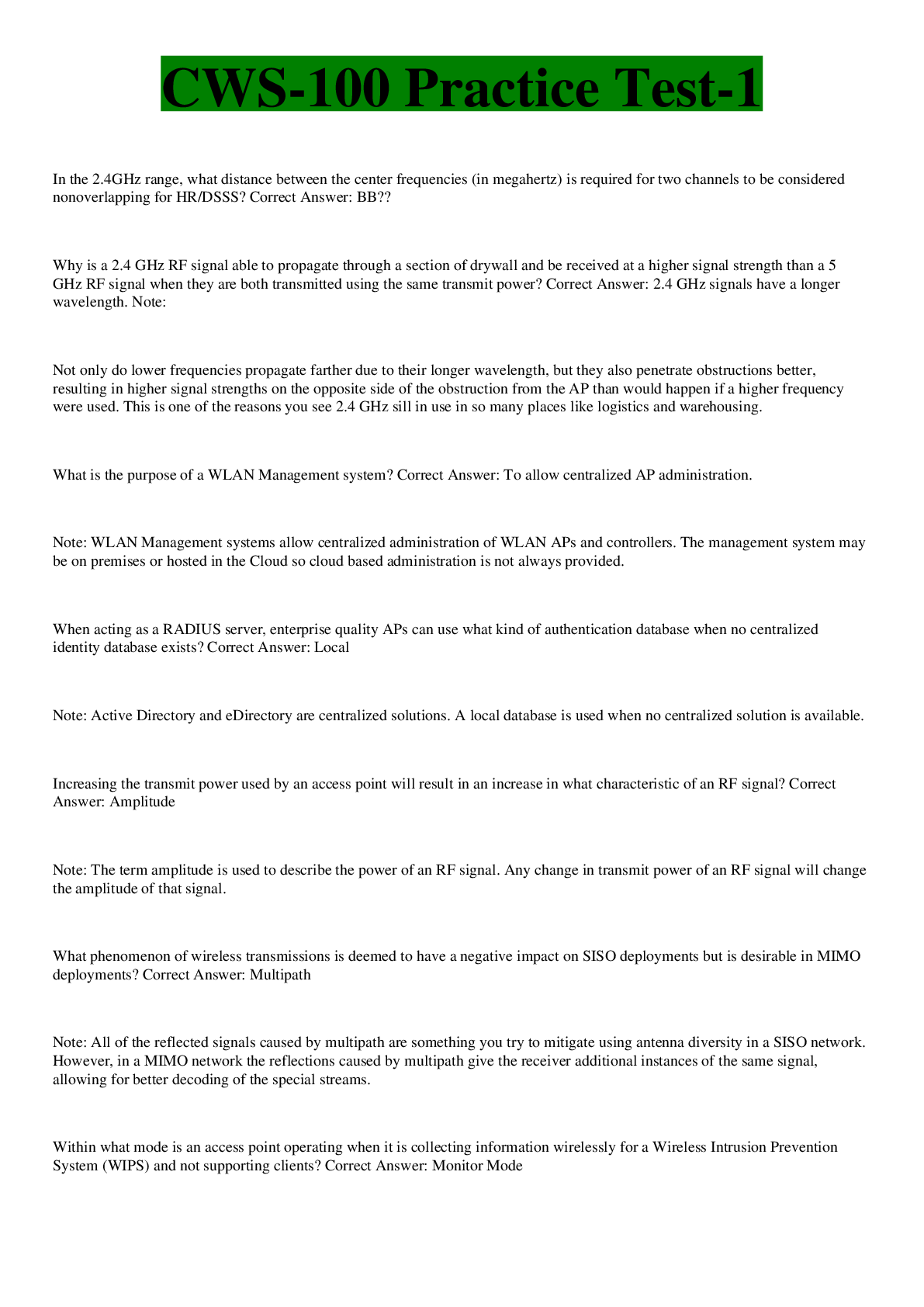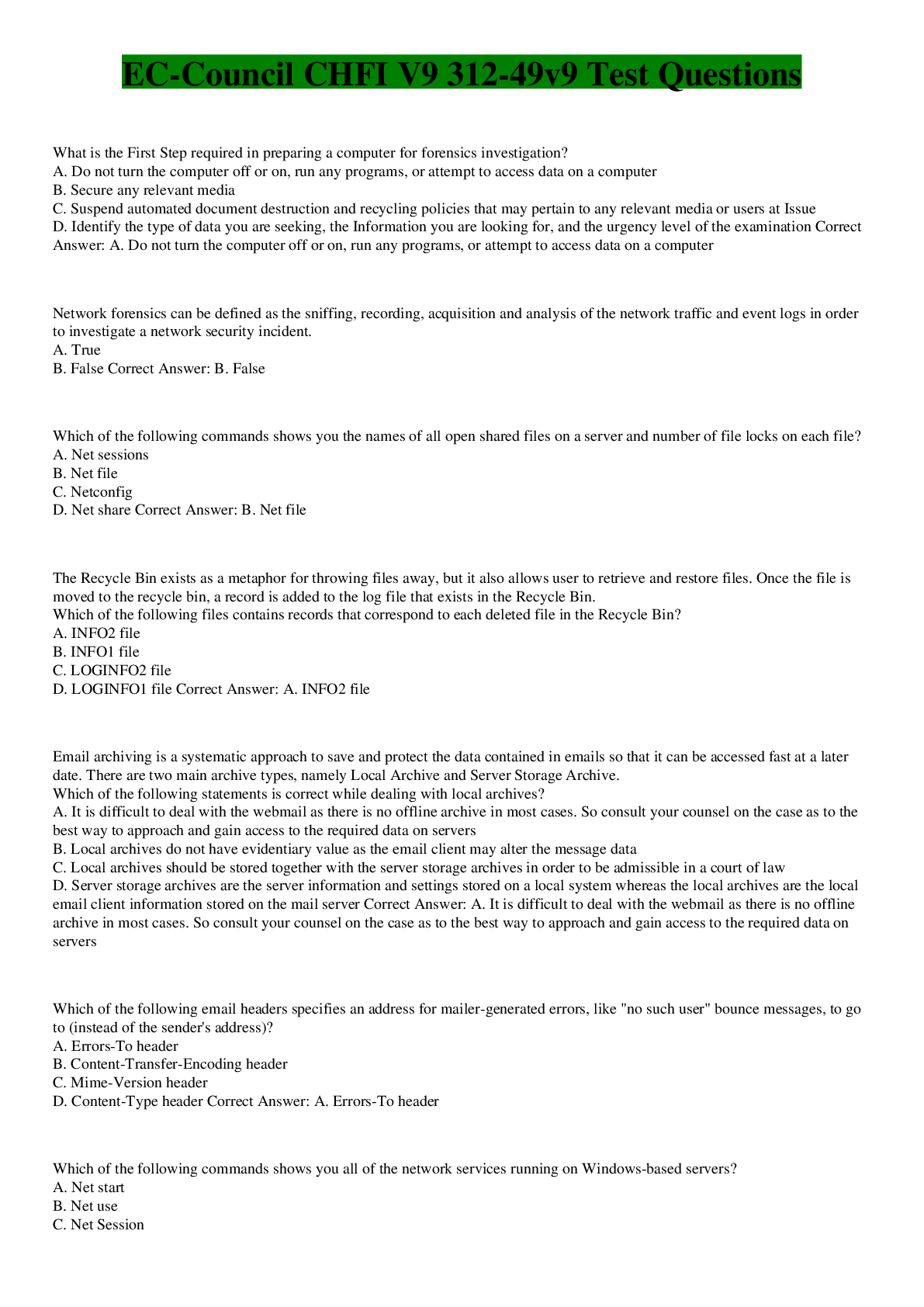*NURSING > EXAM > West Coast University, Los Angeles | NURSING 493| Priority 1 VERSION 2 Exit Exam - 2021 | Graded A+ (All)
West Coast University, Los Angeles | NURSING 493| Priority 1 VERSION 2 Exit Exam - 2021 | Graded A+ (Correct answers highlighted in yellow)
Document Content and Description Below
1. A nurse is planning care for a preschool-age child who is in the acute phase of Kawasaki disease. Which of the following interventions should the nurse include in the plan of care? a. Give acetam... inophen to control the child’s fever b. Monitor the client’s cardiac status (PEDS p120) c. Administer antibiotics via intermittent IV bolus for 24 hrs. d. Provide stimulation with children of the same age in the play room 2. A nurse observes a client on the psychiatric unit muttering and standing near a window. The client states, “The voices are telling me to jump.” Which of the following is an appropriate response by the nurse? a. “Do you recognize the voices as belonging to anyone you know?” b. “I understand the voices are frightening you, but I do not hear any voices.” c. “That can’t be true. The only voices in this room are yours and mine.” d. “You shouldn’t be afraid when you think the voices are telling you to hurt yourself.” 3. A nurse is caring for a client who is preparing his advance directives. Which of the following statements by the client indicates an understanding of advance directives? (Select all that apply.) a. “I need an attorney to witness my signature on the advance directives.” *(nurse witnesses it) b. “I have the right to refuse treatment.” (Leadership p38) c. “My doctor will need to approve my advance directives.” (just needs to write a prescription) d. “My health care proxy can make medical decisions for me.” (Leadership p38) e. “I can’t change my advance directives once submitted.” (yes, you can) 4. A client who is pregnant voices her concern that her 3-year-old son will feel left out once the newborn arrives. Which of the following statements by the nurse is appropriate? a. “Offer your son a gift when the baby receives one.” (Provide a gift from the infant to give the sibling) b. “Teach your son to change the baby’s diapers.” (Allow older siblings to help in providing care for the infant) c. “Tell your son to kiss the baby.” (Maternity p126: Let the sibling be one of the first to see the infant) d. “Move your son to a toddler bed when the baby arrives. (do this weeks prior to baby’s arrival) 5. A nurse is teaching a client who has nephrotic syndrome about dietary management. Which of the following instructions should the nurse include in the teaching? a. Limit total daily sodium intake to 4 to 5 grams B. Obtain most calories from complex carbohydrates (for CKD) c. Consume a high-protein diet (High protein, high potassium, low sodium) d. Avoid intake of soy products. 6. A nurse is interviewing an adolescent client who has a history of physical aggression due to anger management issues. Which of the following is an appropriate question by the nurse? a. “Did you think about removing yourself from the situation when you became angry?” b. “Why do you get angry when things don’t go your way?” c. “How do you think others feel when you express anger?” D. “What are you thinking about when you express anger?” (assessing the underlying issue of aggression) 7. A nurse is planning care for a client who has a sealed radiation implant and is to remain in the hospital for 1 week. Which of the following should the nurse include in the plan of care? a. Wear a dosimeter film badge while in the client’s room. (Med Surg p583) b. Ensure family members remain at least 3 feet from the client (should be at least 6ft) c. Limit each of the client’s visitors to 1 hrs. per day. (should be 30 minutes) d. Remove dirty linens from the room after double bagging. COMPREHENSIVE 2 8. A nurse is preparing to feed a newly admitted client who has dysphagia. Which of the following actions should the nurse plan to take? a. Sit at or below the client’s eye level during feedings (Funds p215: Observe for aspiration and pocketing of food in the cheeks or other areas of the mouth) b. Talk with the client during her feeding c. Discourage the client from coughing during feedings (encourage pt. to cough to prevent aspiration) d. Instruct the client to lift her chin when swallowing (tuck chin) 9. A nurse is caring for a preschool child who is dehydrated. Which of the following assessment findings indicates moderate dehydration? a. Bradypnea B. Oliguria (Funds p343) c. Diaphoresis d. Excessive tears 10. A nurse is providing teaching to a parent of a child who has varicella. Which of the following statements should the nurse include in the teaching? a. “Your child can return to school after a negative titer result.” b. “Your child can return to school 24 hours after beginning antibiotics.” c. “Your child can return to school once the lesions have crusted over.” REPEAT 2016 d. “Your child can return to school once the fever has subsided.” 11. A nurse is providing information for a client who has a new prescription for simvastatin. For which of the following should the nurse instruct the client to monitor and report to the provider? a. Muscle weakness- rhabdomyolysis b. Edema c. Weight loss d. Fever 12. A nurse on a medical-surgical unit is receiving report on four clients. Which of the following clients should the nurse assess first? a. A client who is receiving warfarin and has an INR of 3.3 b. A client who had an NG tube inserted 6 hrs. ago and has abdominal distention c. A client who is 4 hrs. postoperative following a thyroidectomy and reports fullness in the back of the throat (edema can lead to resp. distress) d. A client who has acute kidney injury, a creatinine of 4 mg/dL, and a BUN of 52 mg/dL 13. A nurse is receiving report on four postpartum clients. Which of the following clients should the nurse plan to attend to first? a. A client who reports changing her perineal pad every 2 hrs. b. A client who reports abdominal pain during breastfeeding c. A client who has a urine output of 250 mL in 6 hrs. d. A client who has hyporeflexia while receiving magnesium sulfate REPEAT 14. A nurse is providing nutritional teaching regarding appropriate food choices to a client who has a new diagnosis of uric acid calculi. Which of the following should the nurse include in the teaching? a. Roast beef b. Chicken breast c. Low-fat yogurt (avoid purine foods [organ meats & shellfish] & poultry) d. Tuna fish COMPREHENSIVE 3 15. A nurse in the emergency department is caring for a client who has a full-thickness burn of the thorax and upper torso. After securing the client’s airway, which of the following is the nurse’s priority intervention? a. Preventing infection b. Offering emotional support c. Providing pain management d. Initiating IV fluid resuscitation - REPEAT 16. A nurse is caring for a client who will undergo a procedure. The client states she does not want the provider to discuss the results with her partner. Which of the following is an appropriate response for the nurse to make? REPEAT a. “The provider will be tactful when talking to your partner.” b. “You have the right to decide who receives information.” c. “Is there a reason you don’t want your partner to know about your procedure?” d. “Your partner can be a great source of support for you at this time.” 17. A nurse is providing teaching about dietary recommendations to the parents of a school-age child who has acute kidney injury. Which of the following recommendations should the nurse include in the teaching? a. Provide low-calcium foods b. Provide high-phosphorus foods c. Provide low-potassium foods d. Provide high-sodium foods 18. A nurse is planning care for a school-age child who is 4 hrs. postoperative following perforated appendicitis. Which of the following actions should the nurse include in the plan of care? REPEAT a. Apply a warm compress to the operative site every 4 hrs. b. Offer small amounts of clear liquids 6 hrs. following surgery c. Give cromolyn nebulized solution every 8 hrs. d. Administer analgesics on a scheduled basis for the first 24 hrs. 19. A nurse is assessing a client who is 8 hrs. postpartum and has been unable to void. Which of the following actions should the nurse take first? a. Pour warm water over the client’s perineum b. Offer the client a Sitz-bath c. Insert a sterile catheter d. Administer an analgesic 20. A nurse is providing nutritional teaching for an older adult client who has seizure disorder and a new prescription for phenytoin. Which of the following statements by the nurse is appropriate? a. “Limit foods that contain folic a [Show More]
Last updated: 1 year ago
Preview 1 out of 64 pages

Reviews( 0 )
Document information
Connected school, study & course
About the document
Uploaded On
Dec 25, 2021
Number of pages
64
Written in
Additional information
This document has been written for:
Uploaded
Dec 25, 2021
Downloads
0
Views
61
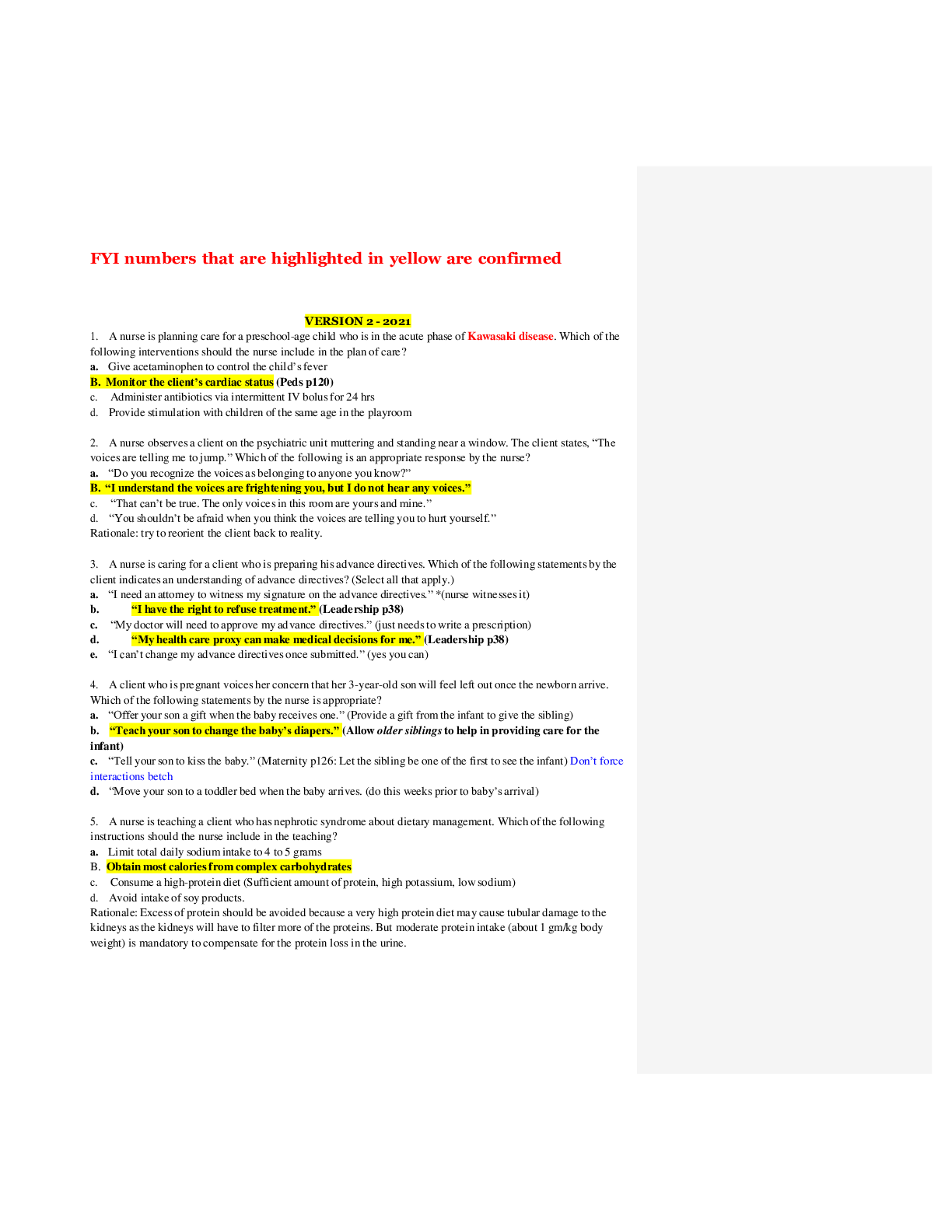

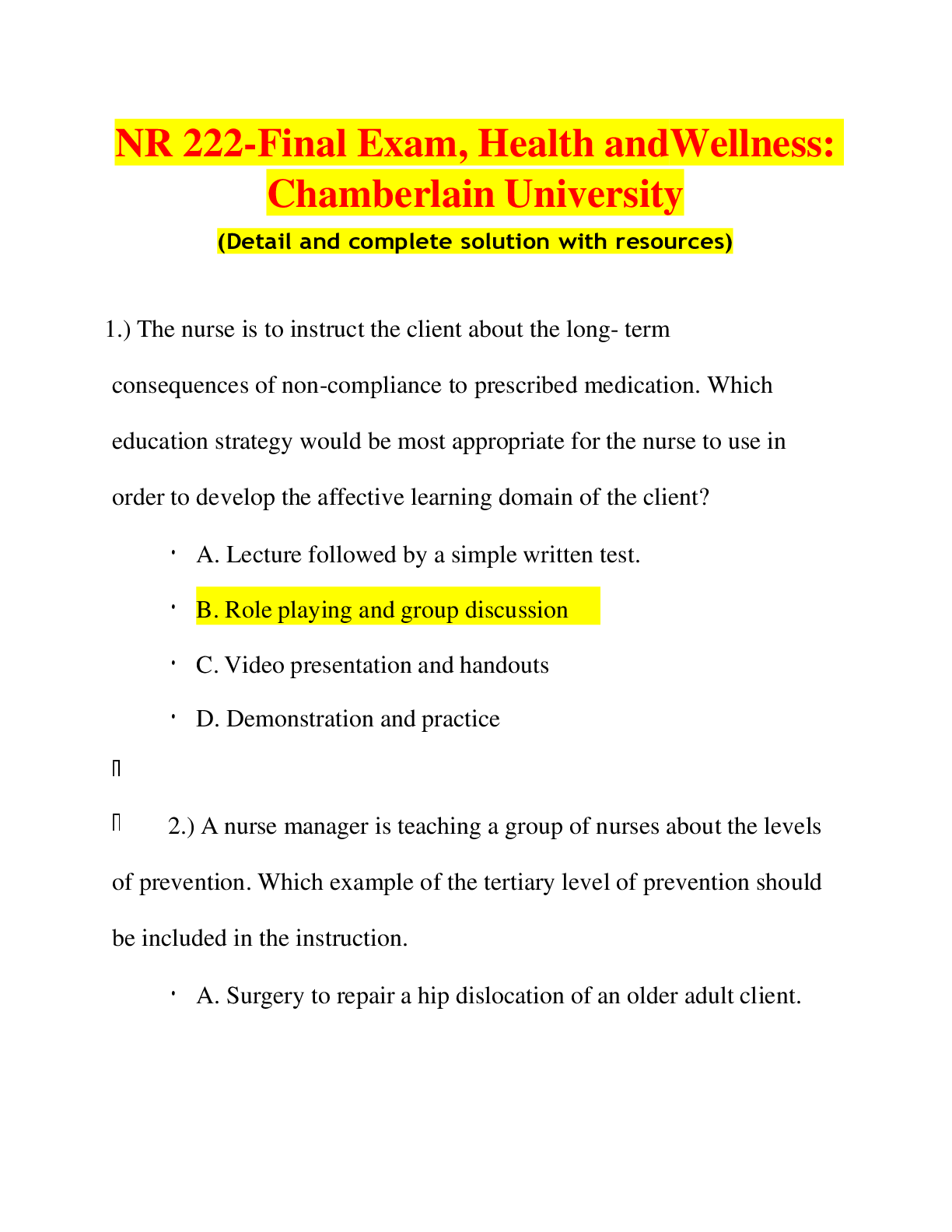
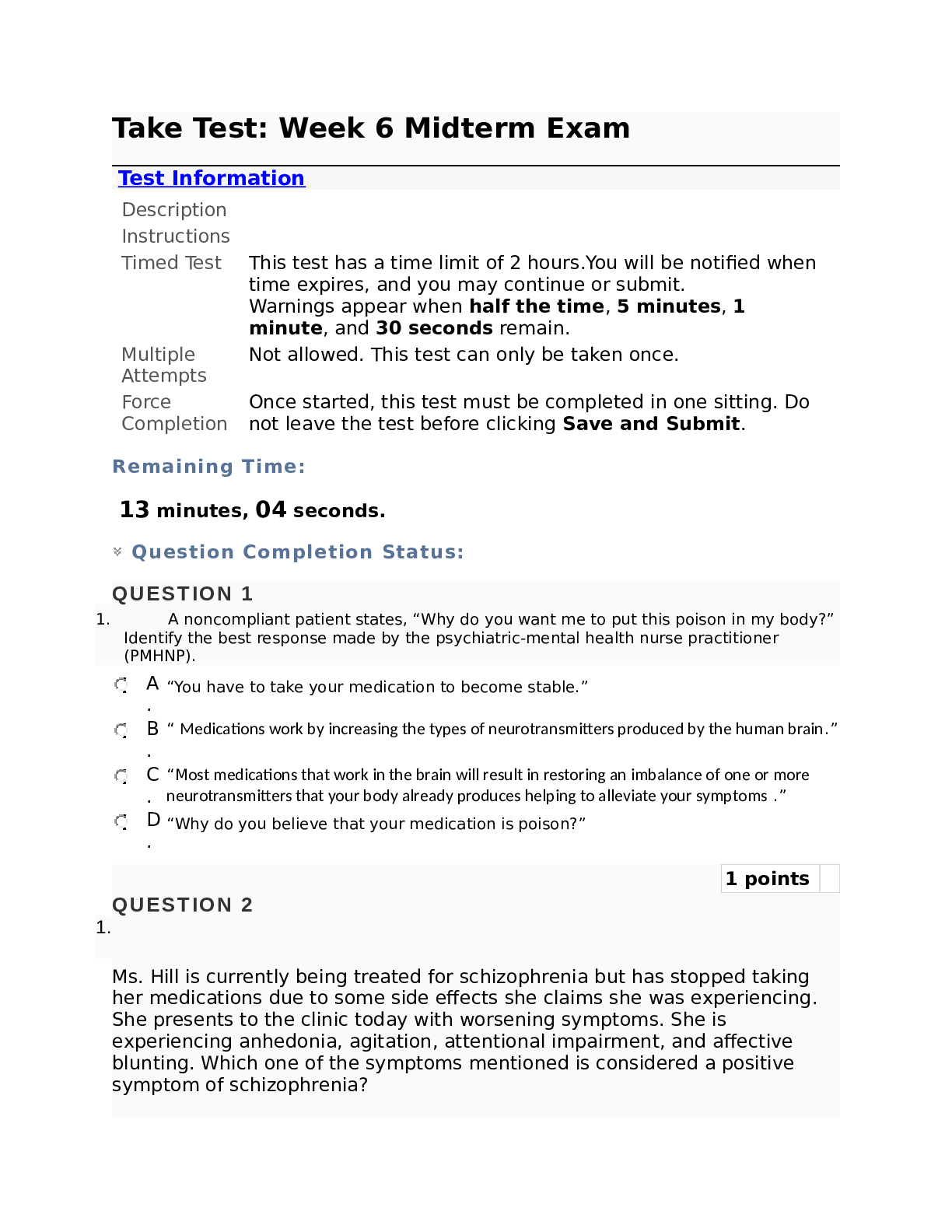
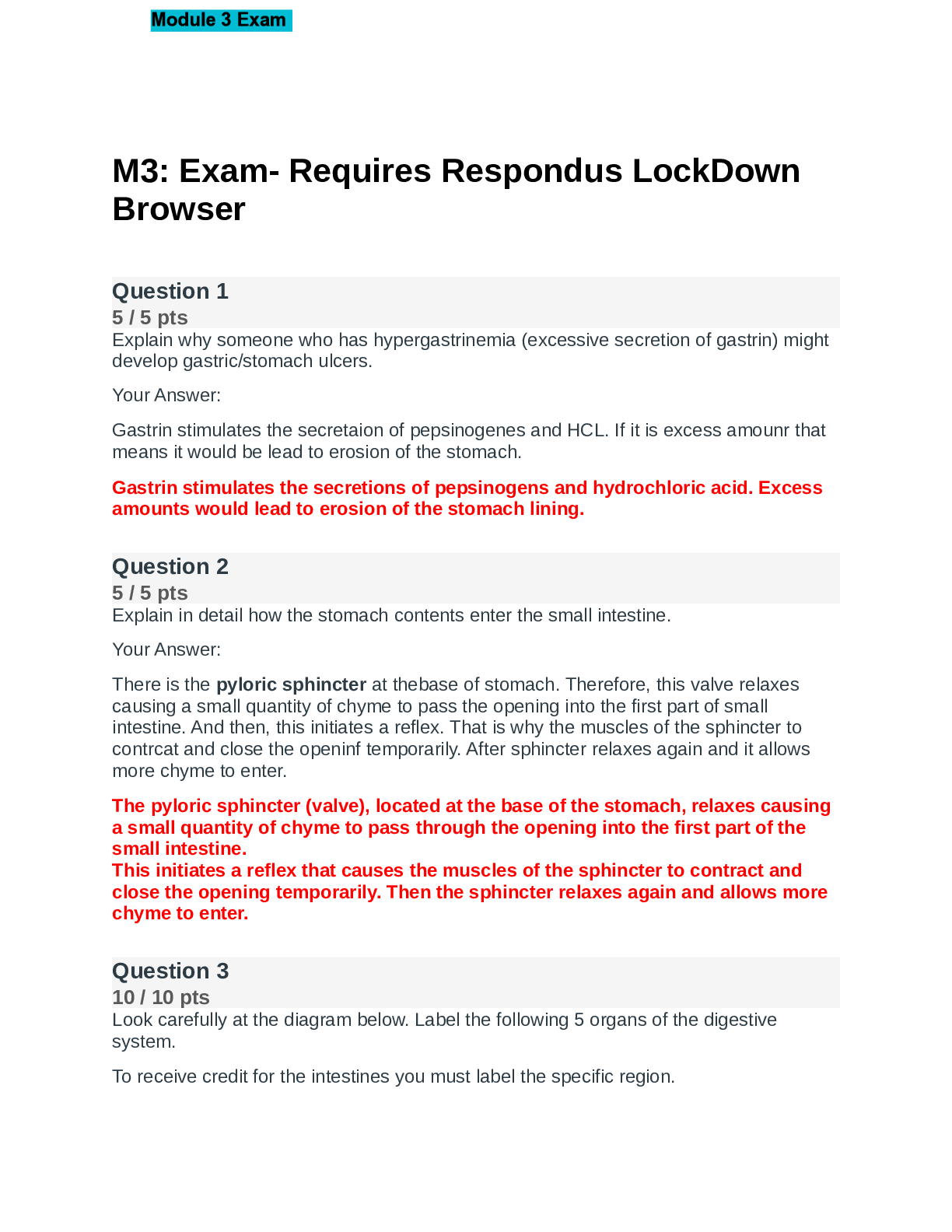

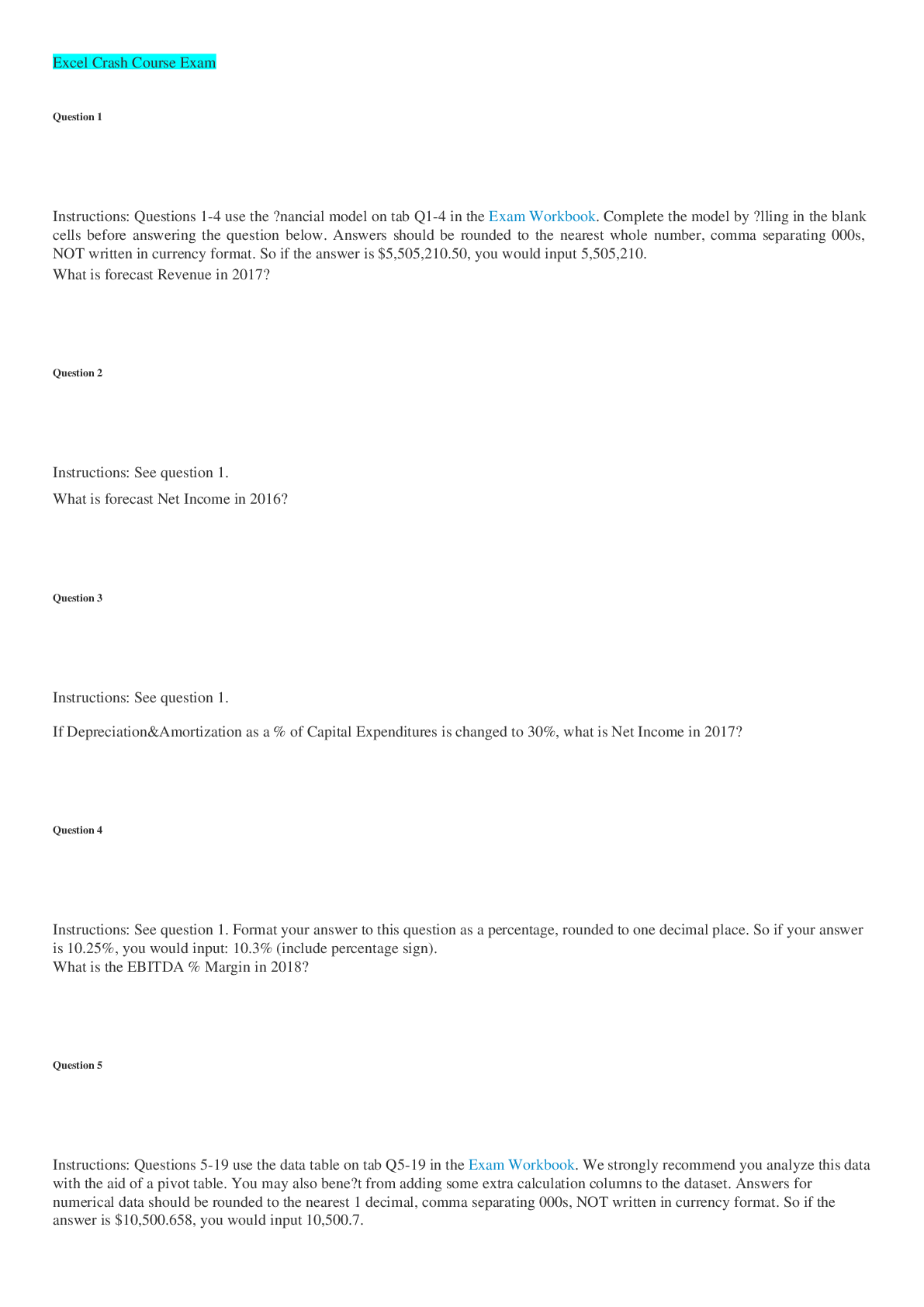

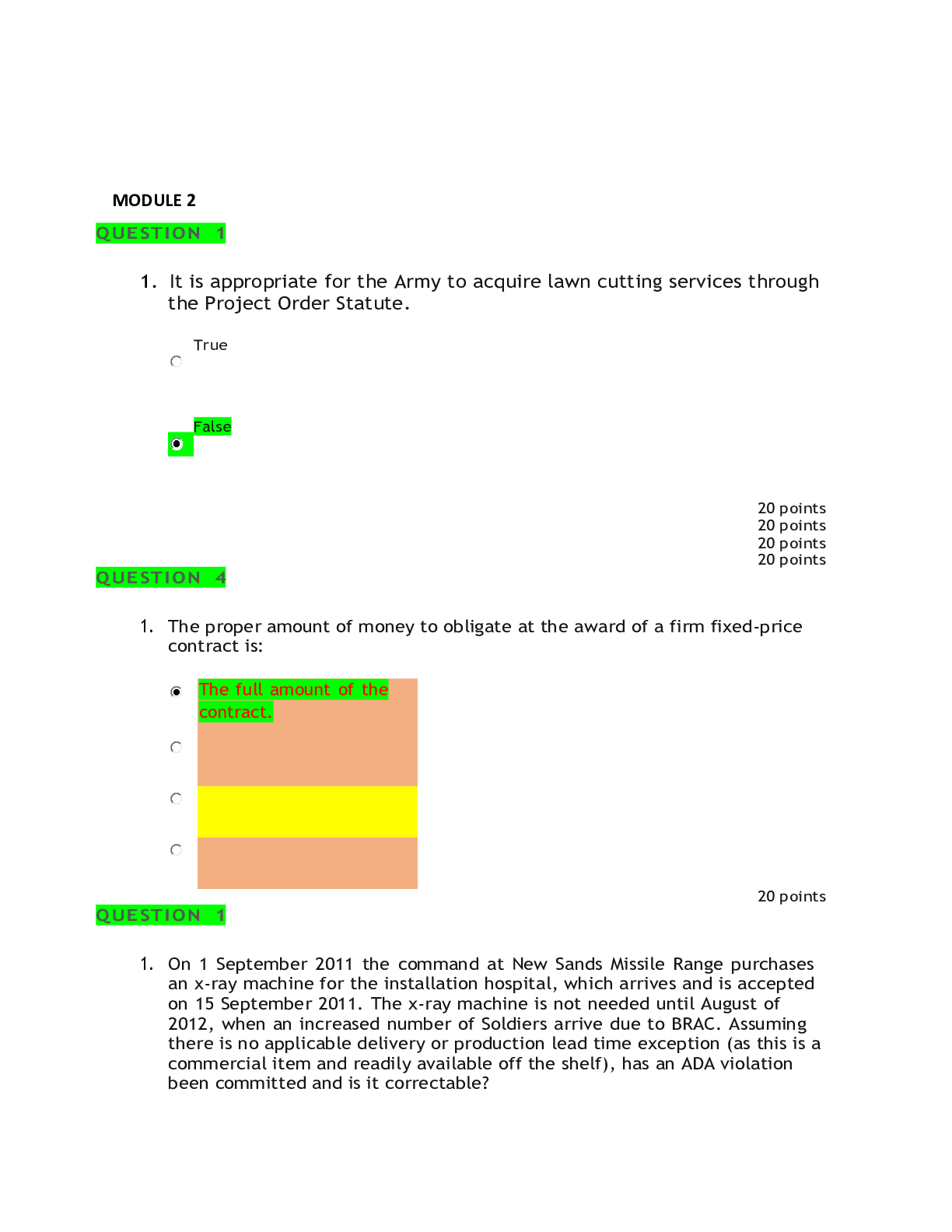

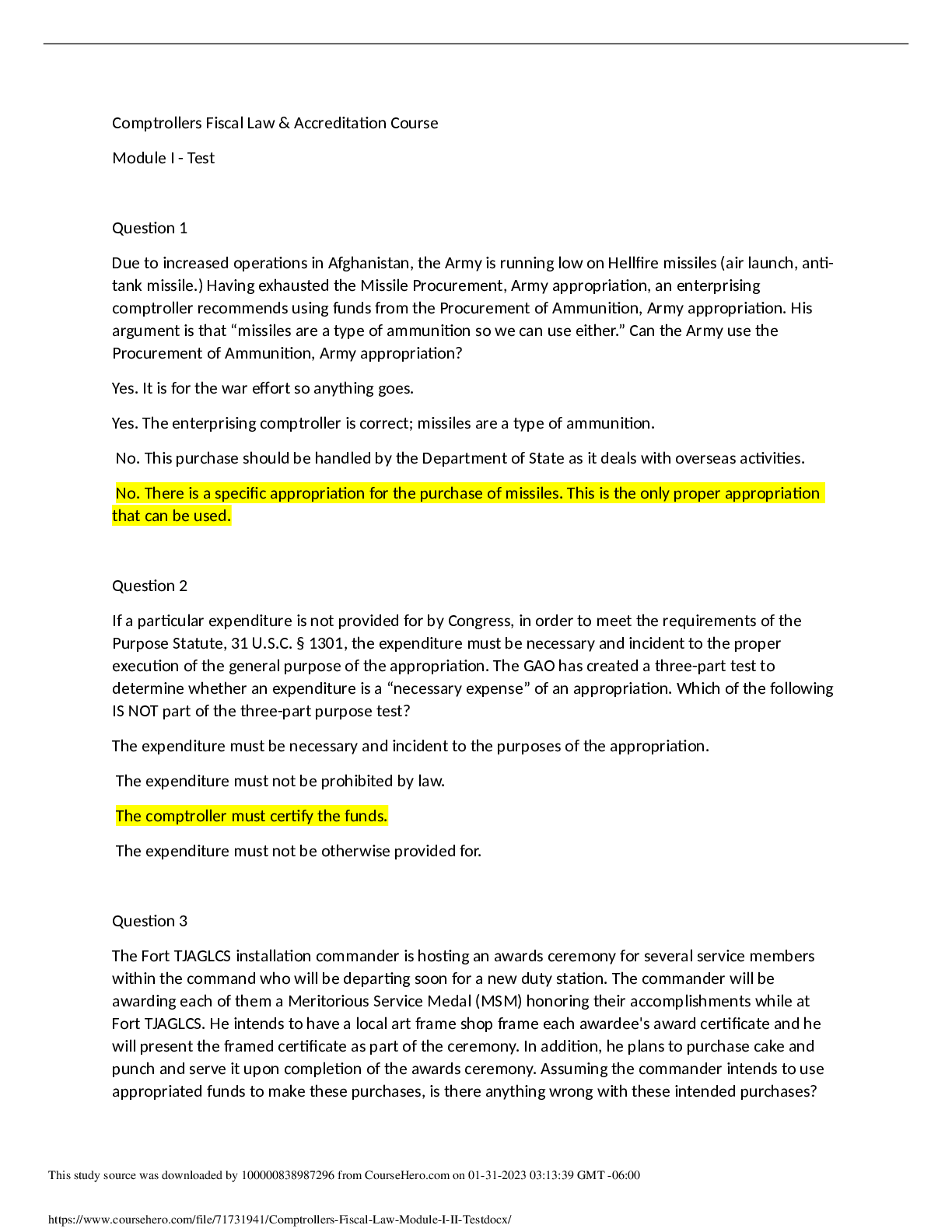
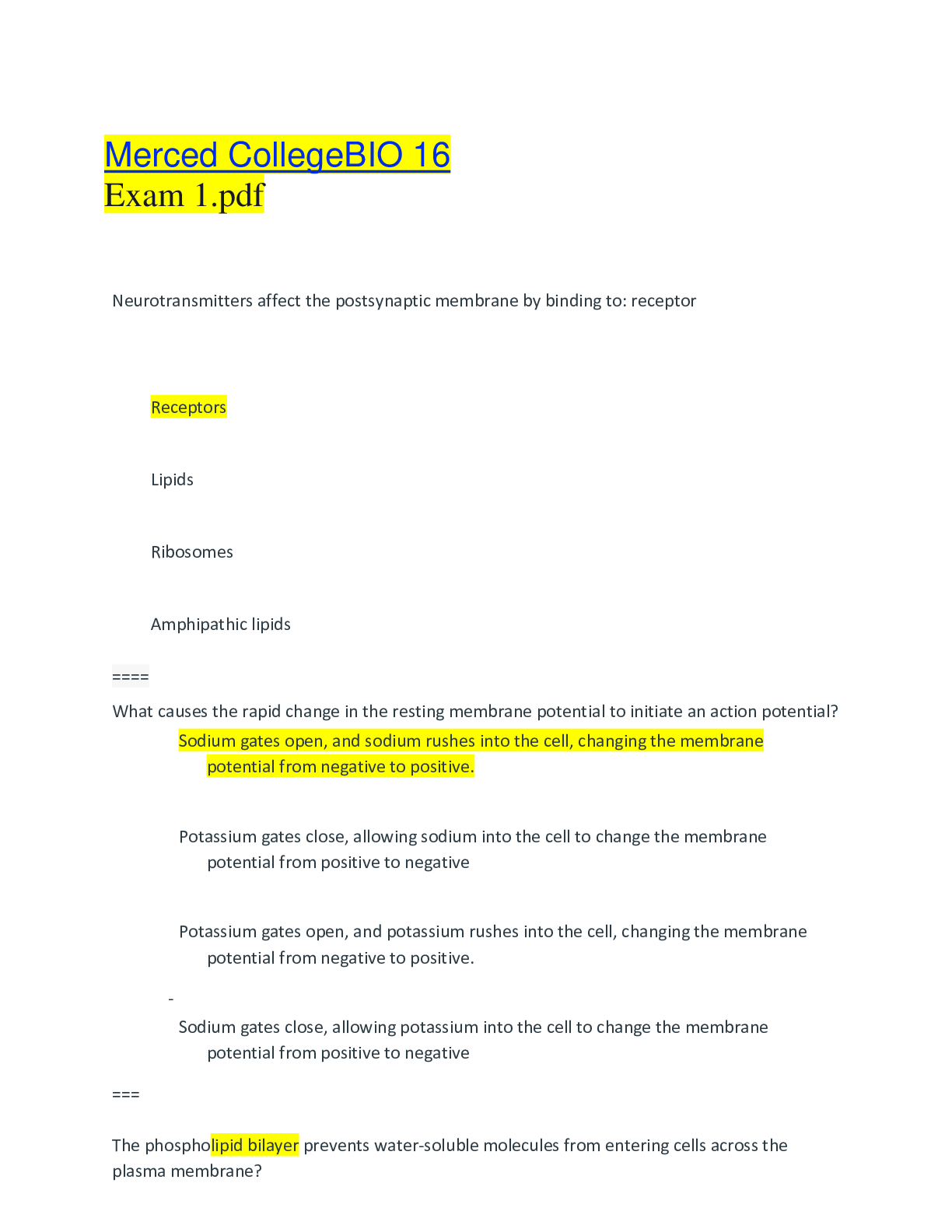
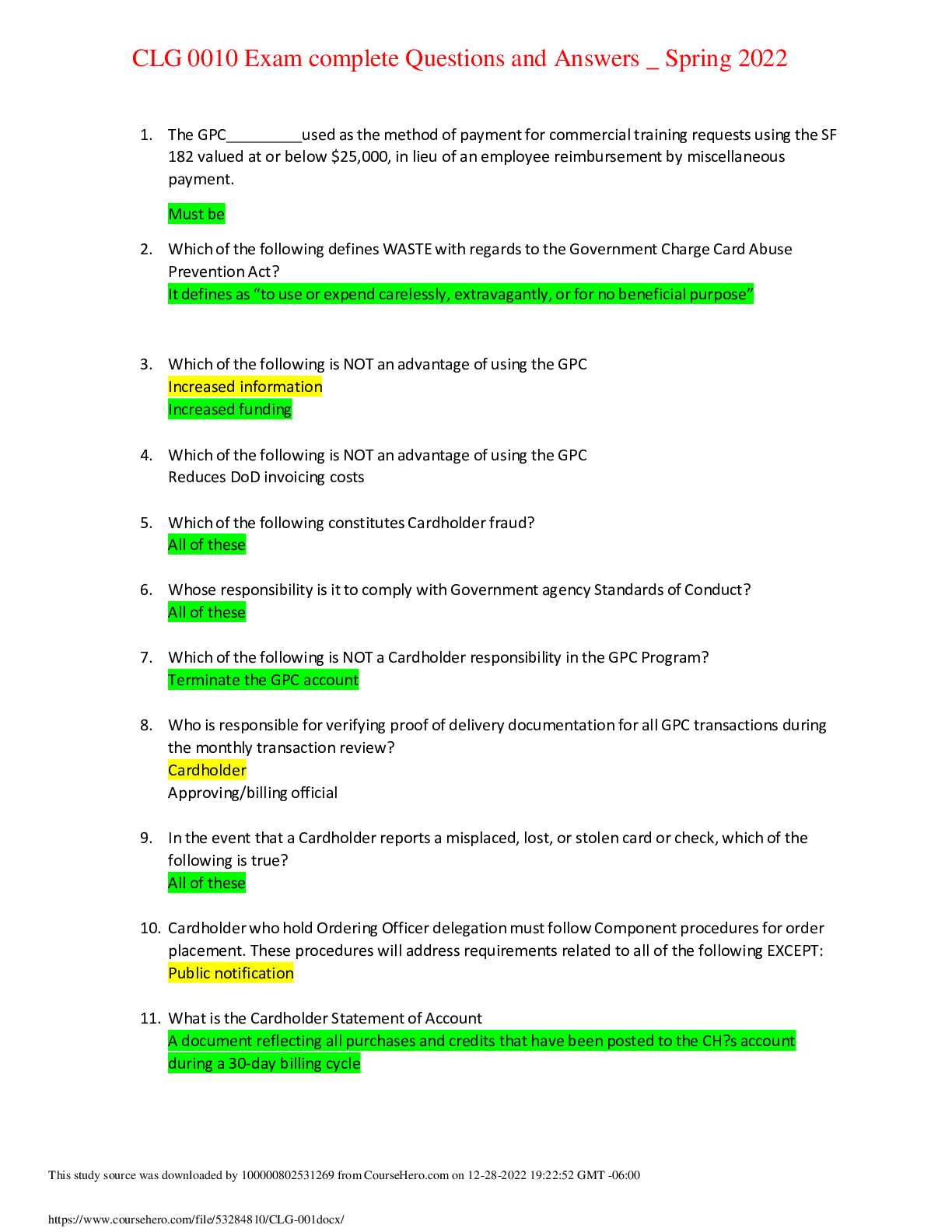
.png)

